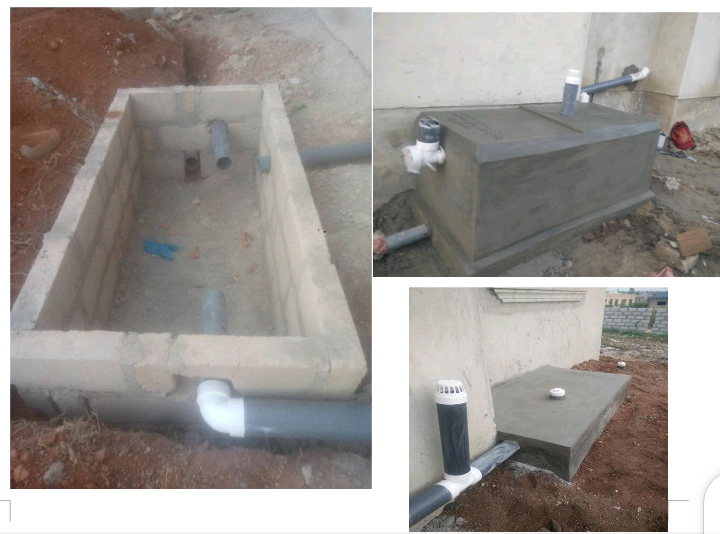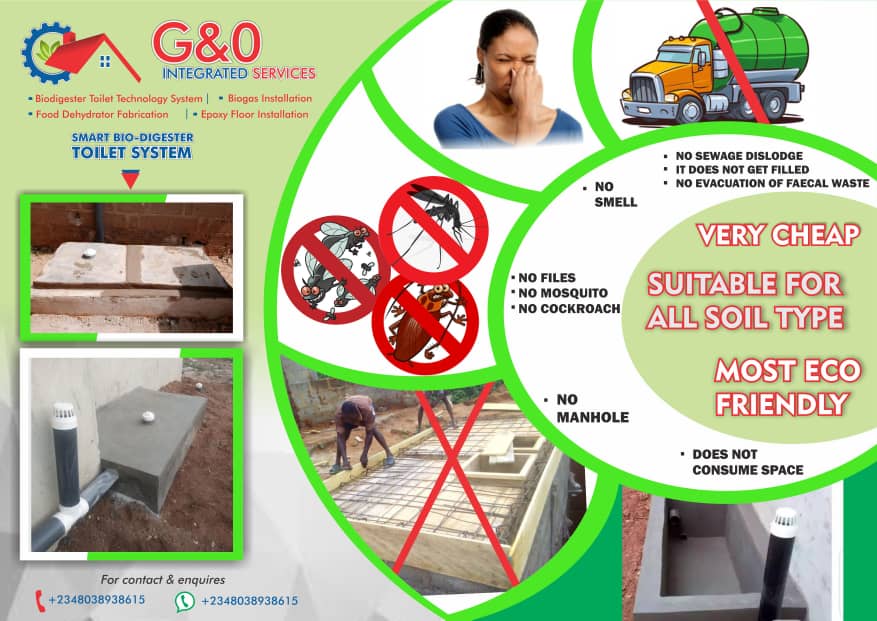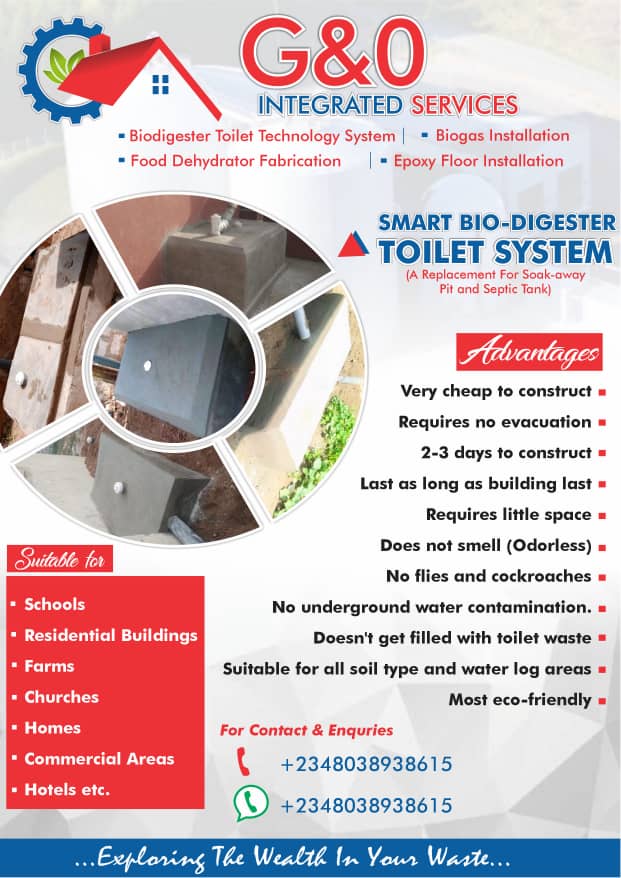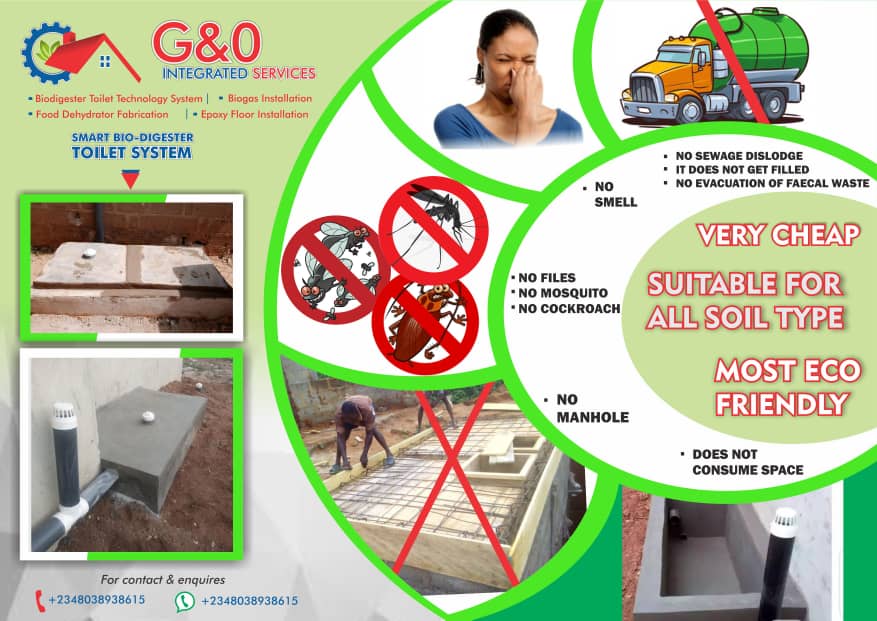What is Bio Digester?
A bio-digester is a smart toilet technology system designed to use biological processes (aerobic digestion) to degrade the waste that enters the system. Aerobic digestion is where aerobic bacteria degrade or eat away the waste material that enters inside a bio-digester. These bacteria usually come on their own or are added to the bio-digester once they installed it in a property. Anaerobic bacteria are a group of bacteria that operate in the absence of oxygen. Their population increases once a bio digester is put to use as they feed on organic waste for survival and multiplication. This makes it very rare to find a bio-digester that fills up as the bacterial feeds on the waste and reduces it to water and gas (that’s amazing, right?).
Digesters are slowly replacing septic tanks. Although they look similar, they perform differently. A Septic tank simply holds the waste until it reaches its full capacity, where exhausting services (sewage disposal trucks) are required to output the waste material.

In a bio-digester, exhausting services (sewage disposal trucks) are not needed. The anaerobic bacteria slowly digest the waste material into water and gas.

How does a biodigester work?
Biodigesters are installed next to the last manhole in a residential or commercial facility. Two major processes ensure the successful operation of a bio-digester:
Bio-degradation: this is where the anaerobic bacteria consume and digest the waste material. After digestion, the waste is turned into water and gas.
Displacement: The gas is released through a vent pipe while the water is discharged through an outlet pipe that is connected to a soak pit. This is the reason why a bio-digester is almost not always filled up.
Advantages of a biodigester system
Easier to construct (2-3 days)
Durable Designed for a lifespan of 20 years with an assumed maximum household size of 20 users per day.
It doesn’t get filled up: A bio-digester hardly requires any exhauster services (sewage disposal trucks) which saves us money.
It does not smell (odourless)
It occupies little space in your facility as compared to large septic tanks.
It doesn’t attract flies, cockroaches or snakes.
It’s eco-friendly
It does not contaminate the groundwater
Water from a bio-digester can be used for irrigation and landscaping purposes. This is because water as an end product of digestion from anaerobic bacteria is treated with some materials laid in the chambers before the water is released to the outlet.
You can also use a bio-digester to produce biogas which is used for cooking purposes and the generation of electricity. For this to happen, a lot of organic material is needed. Biogas generating bio-digesters are suitable for livestock farmers, especially dairy, pig or cattle farmers. Fixed-dome or plastic-bag bio-digesters are used for these purposes.
Suitable for: Schools, residential buildings, farms, Churches, Commercial areas, Shops/ malls, hotels etc.
Sizes and cost
The smallest bio-digester is a 3Feet X 5 Feet and 3Feet deep to cater for a maximum size of twenty (20) continuous users. This size is perfect for homes and small business premises. It saves more than 60% of the cost required to construct a regular septic tank/soakaway system. For commercial properties like churches, schools stadiums etc. it can be designed to serve over 100 continuous users daily.
For further information and inquiries, please contact G&O INTEGRATED SERVICES ON +2348038938615









